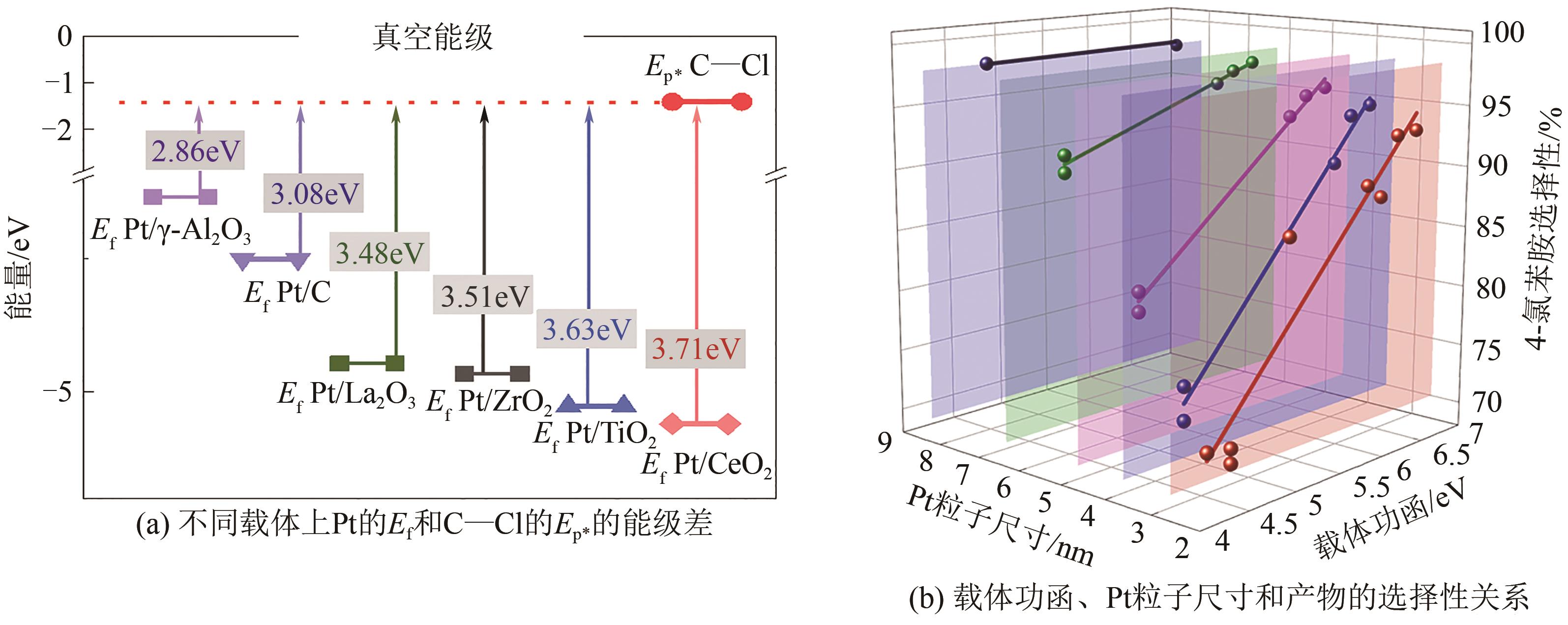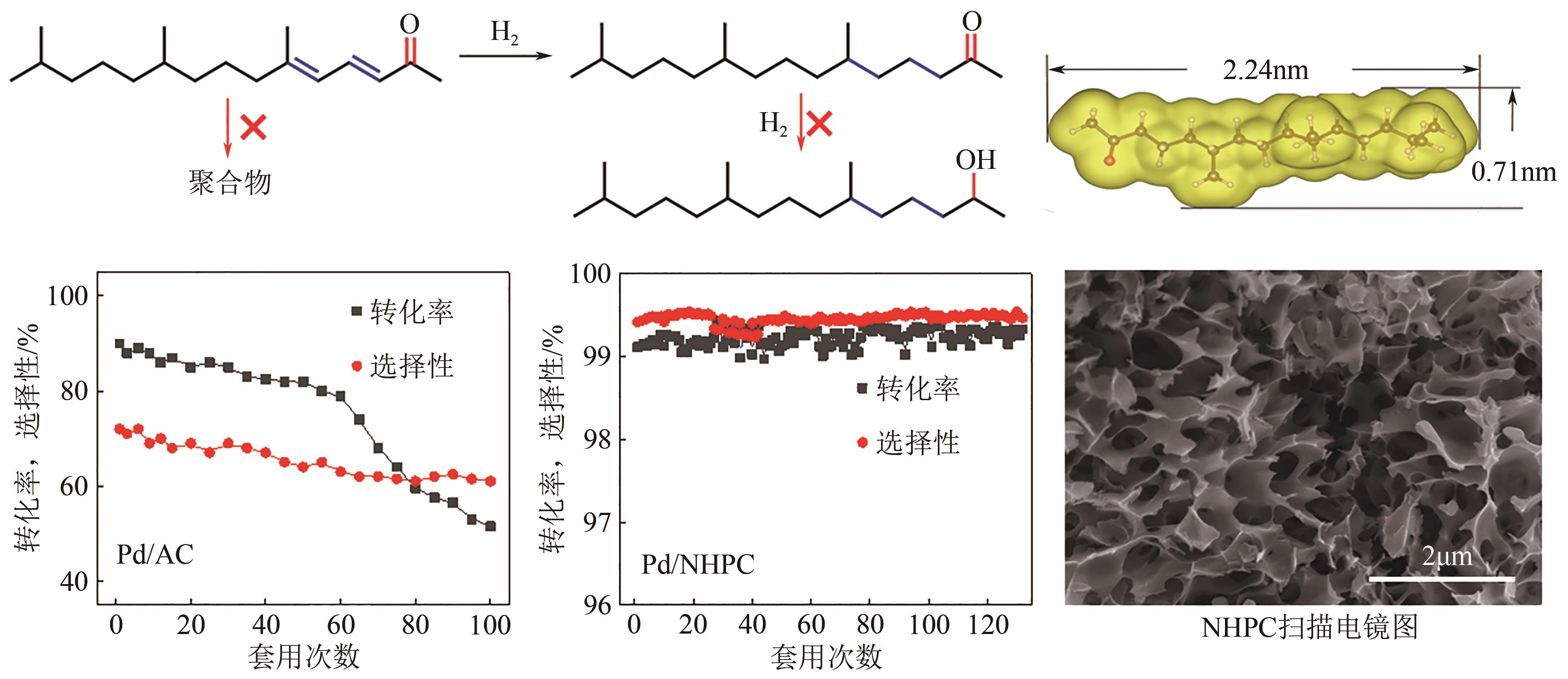化工进展 ›› 2023, Vol. 42 ›› Issue (8): 3917-3922.DOI: 10.16085/j.issn.1000-6613.2023-0802
基团辨识加氢:从概念到应用
- 浙江大学化学系催化研究所,能源高效清洁利用全国重点实验室,化学前瞻技术研究中心,浙江 杭州 310058
Group recognition hydrogenation: From concept to application
MAO Shanjun( ), WANG Zhe, WANG Yong(
), WANG Zhe, WANG Yong( )
)
- Center of Chemistry for Frontier Technologies, State Key Laboratory of Clean Energy Utilization, Institute of Catalysis, Department of Chemistry, Zhejiang University, Hangzhou 310056, Zhejiang, China
摘要:
催化加氢是许多大宗和精细化学品生产的关键步骤。当反应物中存在多个可还原官能团时,需要对特定基团进行选择性氢化,以生产高价值化学品。然而,由于对催化剂活性位点与官能团之间相互作用的深入理解不足,实现基团的定向加氢转化仍然具有极大的挑战性。某些催化剂以牺牲活性为代价,换取相对较高的选择性。为解决这一问题,本文提出了“基团辨识加氢”新概念,为加氢催化剂的定向设计提供了不同视角。该新概念以实现催化剂对目标基团的定向活化或辨识响应为原则,同时要求反应选择性的提升不以牺牲活性为代价。本文回顾了实现这一目标的几种策略。首先,可以通过调整催化剂活性位点和目标基团的轨道对称性和能级匹配度,从能量空间实现调控。其次,也可以通过调整催化剂几何结构,从物理空间实现调控,以提高催化剂活性、选择性及稳定性。此外,通过调控反应微环境,实现基团的辨识吸附和活化也是一种有效的策略。基于“基团辨识加氢”概念设计的催化剂在几类具有挑战性的加氢反应中表现出优异的选择性加氢性能,显示出显著的工业应用价值。最后,通过正交分解法对电子和几何效应进行解耦,为以上策略的量化解析提供了方法学基础。
中图分类号:





